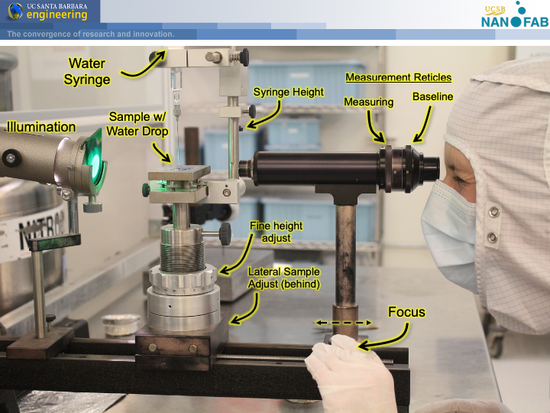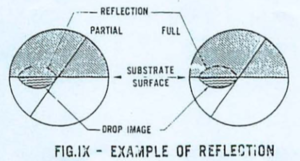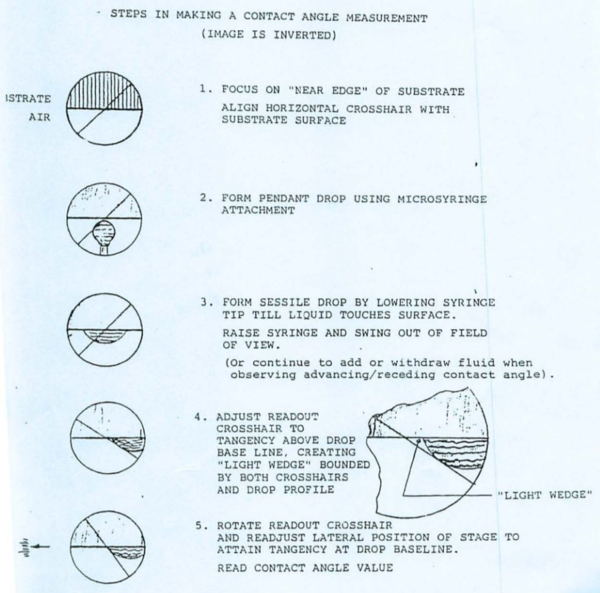Difference between revisions of "Goniometer (Rame-Hart A-100) - Operating Procedure"
Jump to navigation
Jump to search
m (→Measurement Procedure: indent, spacing) |
(added "Tile Angle" techique) |
||
| (One intermediate revision by the same user not shown) | |||
| Line 6: | Line 6: | ||
* Note that the image through the scope is ''inverted'' upside-down. |
* Note that the image through the scope is ''inverted'' upside-down. |
||
* You will also see a reflection of the water droplet on your polished substrates, as illustrated here: |
* You will also see a reflection of the water droplet on your polished substrates, as illustrated here: |
||
| − | :[[File:Goniometer - Reflective Sample Illustration.png|alt=Illustration of a reflective sample.|none|thumb|Illustration of a reflective sample. Substrate is on ''top'' due to inverted image.]] |
+ | :[[File:Goniometer - Reflective Sample Illustration.png|alt=Illustration of a reflective sample.|none|thumb|'''View through the scope''': Illustration of a reflective sample. Substrate is on ''top'' due to inverted image.]] |
[[File:Goniometer (Rame-Hart A-100) - Steps for Measuring v1.png|600x600px]] |
[[File:Goniometer (Rame-Hart A-100) - Steps for Measuring v1.png|600x600px]] |
||
| + | |||
| + | === Alternate Measurement Technique - Tilt Angle === |
||
| + | An alternate, "quick and dirty" method for comparing hydrophobicity between surfaces is to drop an identical amount of water on each sample's surface, and tilt the sample until the drop rolls off - the tilt angle required can be compared. This technique is much more "noisy" than the goniometer, but can be done without highly specialized equipment. |
||
Latest revision as of 16:07, 30 September 2020
System Illustration
Measurement Procedure
To measure the contact angle of water on a surface, perform the following procedure.
- Note that the image through the scope is inverted upside-down.
- You will also see a reflection of the water droplet on your polished substrates, as illustrated here:
Alternate Measurement Technique - Tilt Angle
An alternate, "quick and dirty" method for comparing hydrophobicity between surfaces is to drop an identical amount of water on each sample's surface, and tilt the sample until the drop rolls off - the tilt angle required can be compared. This technique is much more "noisy" than the goniometer, but can be done without highly specialized equipment.


